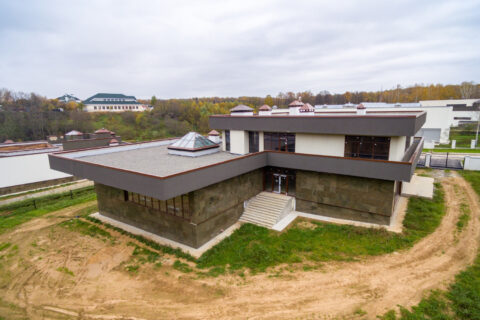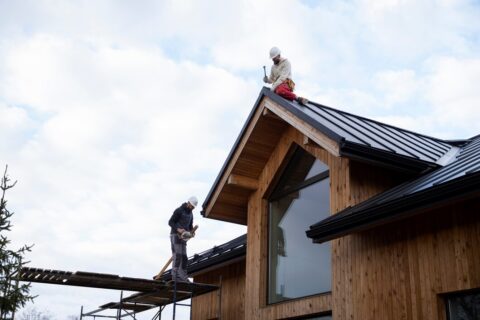Roof Ventilation: Maximizing Your Home’s Energy Efficiency with Magnum Roofing
A well-ventilated roof is essential for maintaining a comfortable and energy-efficient home. Proper roof ventilation improves indoor air quality and helps regulate temperature, which can lead to significant savings on heating and cooling costs. As a leading residential roofing service in Ottawa, Magnum Roofing understands the crucial role ventilation plays in ensuring the performance of asphalt roofing installations, repairs, and replacements. With years of experience and a team of highly skilled professionals, we pride ourselves on offering comprehensive roofing solutions that focus on energy efficiency and the longevity of your roofing system.
Inadequate roof ventilation can result in several issues that cause discomfort and negatively impact your home’s energy consumption. Hot air rising from your living spaces can get trapped in the attic, making your home uncomfortably warm and increasing the demand for air conditioning. During Canada’s harsh winters, improper ventilation can lead to ice dams, which may result in costly damage to your roof, insulation, and interior structure. Moreover, poor ventilation can diminish the lifespan of your asphalt shingles, forcing you to replace your roof prematurely.
Given the importance of proper roof ventilation, this article will provide an in-depth look at the fundamentals of an effective ventilation system, common ventilation issues faced by Ottawa homeowners, and the benefits of investing in professional roofing services for ventilation solutions. By understanding the prominence of roof ventilation, homeowners can make informed decisions to enhance their home’s energy efficiency, indoor comfort, and overall roof lifespan. Rest assured, at Magnum Roofing, we are committed to educating our clients and delivering top-notch roofing solutions tailored to their unique needs and preferences.
Fundamentals of Effective Roof Ventilation
A well-designed roof ventilation system should minimize temperature fluctuations and maintain proper airflow throughout your attic. Three primary components create an effective ventilation system:
- Intake Vents: These vents are typically installed in the soffits or eaves, allowing cool, fresh air to enter the attic space.
- Exhaust Vents: Placed at the roof’s highest point, these vents allow hot, moist air to escape the attic. Ridge vents and roof vents are common types of exhaust vents.
- Proper Airflow: A balance of intake and exhaust vents is vital to achieving optimal airflow and ensuring your ventilation system works efficiently.
Common Roof Ventilation Issues
Several issues may arise due to inadequate roof ventilation:
- Overheating: Insufficient ventilation can cause heat build-up in your attic, making your home uncomfortable and increasing your dependence on air conditioning.
- Condensation and Moisture: In colder months, warm air from your living spaces can rise and collide with cold surfaces in the attic, resulting in condensation. This moisture can lead to mould growth and damage your insulation, reducing its effectiveness.
- Ice Dams: Poor ventilation contributes to the formation of ice dams, as warm air in the attic melts snow on the roof, causing it to refreeze on the eaves. This ice build-up can lead to leaks and damage your roof’s structure.
- Premature Shingle Deterioration: When your roof is poorly ventilated, excessive heat can cause shingles to crack or curl, compromising the roof’s ability to protect your home from the elements.
Benefits of Professional Roofing Services for Ventilation Solutions
Investing in professional roofing services to address your home’s ventilation needs offers numerous benefits:
- Expert Assessment: We can evaluate your existing roof ventilation system and recommend improvements to optimize airflow and energy efficiency.
- Proper Installation: A well-installed ventilation system is crucial to its effectiveness. With our experienced team, you can trust that your vents will be installed correctly, ensuring optimal performance.
- Longevity: By improving your roof’s ventilation, you can extend your shingles’ lifespan, avoiding premature replacements.
- Energy Savings: A properly ventilated roof can increase energy savings by reducing the need for heating and cooling in your home.
Tips for Maintaining Proper Roof Ventilation
To ensure the ongoing effectiveness of your roof ventilation system, consider the following maintenance tips:
- Inspect Your Ventilation System: Regularly inspect your ventilation system for any signs of leaks, damage, or blockages, and address issues promptly to maintain optimal airflow.
- Insulate Your Attic: Proper attic insulation prevents heat loss and controls temperature fluctuations, ensuring an energy-efficient home.
- Clean Your Vents: Periodically clean your intake and exhaust vents to remove dust, debris, and other obstructions that can impede airflow.
- Consult with Professionals: Work with professional roofing services, like ours, for maintenance, repairs, and advice on optimizing your roof’s ventilation.
Conclusion
Proper roof ventilation is essential for maintaining a comfortable and energy-efficient home. By understanding the fundamentals of an effective ventilation system, recognizing common issues, and partnering with professional roofing services for ventilation solutions, homeowners can enhance their home’s energy efficiency, attic comfort, and overall roof lifespan. At Magnum Roofing, we are dedicated to providing Ottawa residents with the education and services they need to maintain their roofs in optimal condition. To learn more about our roof ventilation solutions and how we can help improve your home’s energy efficiency, contact us today.


